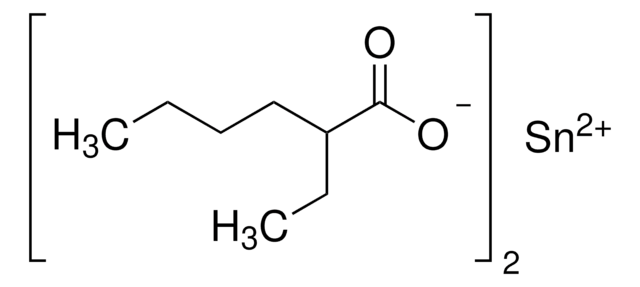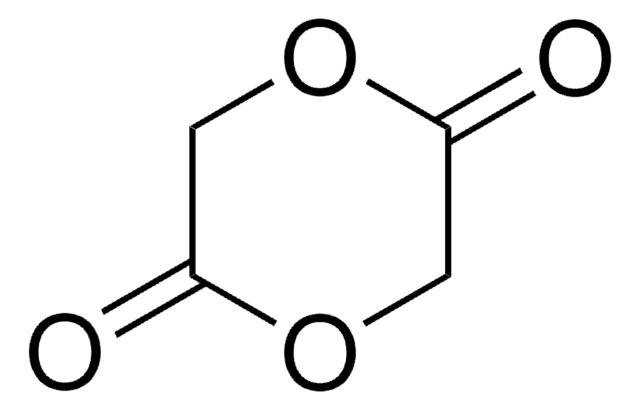Key Documents
704067
ε-Caprolactone
97%
Synonim(y):
2-Oxepanone, 6-Caprolactone monomer, 6-Hexanolactone
About This Item
Polecane produkty
gęstość pary
3.9 (vs air)
Poziom jakości
ciśnienie pary
0.01 mmHg ( 20 °C)
Próba
97%
Postać
liquid
współczynnik refrakcji
n20/D 1.463 (lit.)
tw
97-98 °C/15 mmHg (lit.)
gęstość
1.03 g/mL at 25 °C (lit.)
ciąg SMILES
O=C1CCCCCO1
InChI
1S/C6H10O2/c7-6-4-2-1-3-5-8-6/h1-5H2
Klucz InChI
PAPBSGBWRJIAAV-UHFFFAOYSA-N
Szukasz podobnych produktów? Odwiedź Przewodnik dotyczący porównywania produktów
Opis ogólny
Zastosowanie
Hasło ostrzegawcze
Warning
Zwroty wskazujące rodzaj zagrożenia
Zwroty wskazujące środki ostrożności
Klasyfikacja zagrożeń
Eye Irrit. 2
Kod klasy składowania
10 - Combustible liquids
Klasa zagrożenia wodnego (WGK)
WGK 1
Temperatura zapłonu (°F)
228.2 °F - closed cup
Temperatura zapłonu (°C)
109 °C - closed cup
Środki ochrony indywidualnej
Eyeshields, Gloves, type ABEK (EN14387) respirator filter
Wybierz jedną z najnowszych wersji:
Masz już ten produkt?
Dokumenty związane z niedawno zakupionymi produktami zostały zamieszczone w Bibliotece dokumentów.
Klienci oglądali również te produkty
Nasz zespół naukowców ma doświadczenie we wszystkich obszarach badań, w tym w naukach przyrodniczych, materiałoznawstwie, syntezie chemicznej, chromatografii, analityce i wielu innych dziedzinach.
Skontaktuj się z zespołem ds. pomocy technicznej



![Chloro[tris(2,4-di-tert-butylphenyl)phosphite]gold](/deepweb/assets/sigmaaldrich/product/structures/386/294/6df0db46-002b-4599-ad6c-451c419a3fc5/640/6df0db46-002b-4599-ad6c-451c419a3fc5.png)






